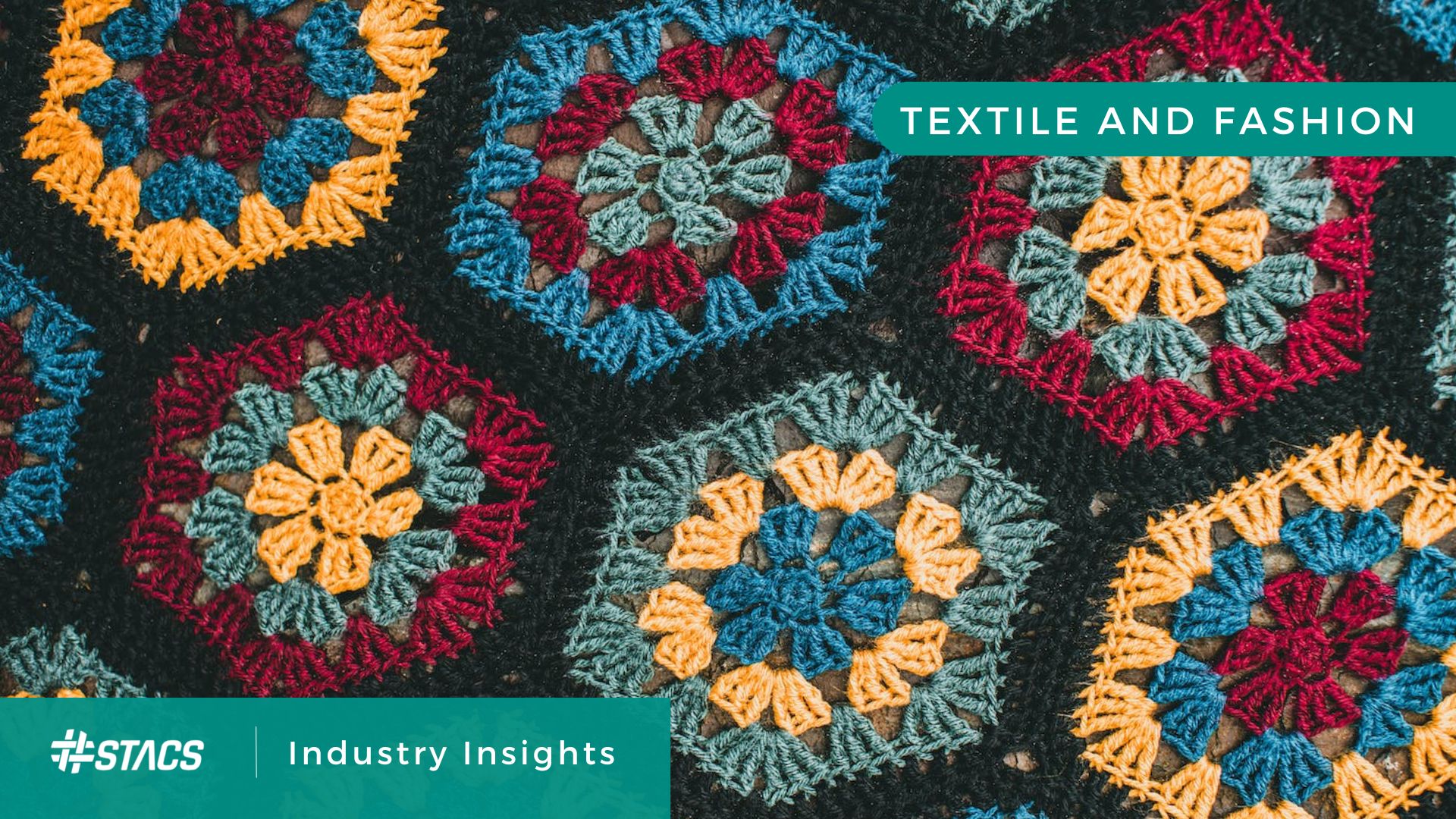The Perils of Fast Fashion

However, issues within sustainable fashion begin much earlier up the supply chain, starting with massive amounts of resources consumed to produce apparel. The fashion industry is estimated to consume 79 trillion litres of water annually, contributing about 20% of all industrial wastewater discharge. Most retailers also outsource their operations to developing countries in Asia due to the lower cost of labour. Yet, this oftentimes gives rise to ethical issues such as abysmal working conditions, allegations of child labour, and low wages.

According to a McKinsey study, at the current rate of emissions, the fashion industry is set to miss the goal of limiting global warming preferably to 1.5ºC, agreed upon at the Paris Climate Agreement, by up to 50%. Encouragingly, however, growing consumer demand for sustainable fashion has created a greater impetus for businesses to pivot towards sustainability.
Today, 68% of consumers across all generations are willing to spend more for sustainable fashion, up from 58% 2 years ago. Consumers today also want greater transparency. They want to know that the materials used in production were sustainably-sourced, and that the suppliers whom brands worked with complied with Environmental, Social, Governance (ESG) standards. With such strong business and regulatory push, it is apparent that fashion retailers must embrace sustainable fashion and urgently integrate sustainability across their entire supply chain.
Challenges in Sustainable Fashion

While businesses in the fashion industry are increasingly trying to decarbonise their operations, reduce their scope 3 emissions, and ultimately achieve net zero, challenges stand in the way.
Difficulties with Supplier Sustainability Monitoring
Supplier sustainability monitoring refers to the act of monitoring the ESG credentials of a company’s end-to-end chain of suppliers. For the company to control its overall emission levels and plan out its net zero pathway, companies need to have visibility of the various suppliers throughout different parts of their supply chain to ensure that they are making good on their ESG commitments.
In sectors with complicated and extensive supply chains like the fashion industry, with many different ESG credentials throughout the various parts of the supply chain, supplier sustainability monitoring is extremely challenging and inefficient due to the complexity liaising with multiple stakeholders and the current manual process of questionnaires and meetings. This leads to suppliers being under-engaged by companies and unsure of how they can progress towards sustainability.
Additionally, implementing supplier sustainability monitoring also requires large sums of capital financing, further deterring companies on their green journey.
Lack of Standardised Reporting Formats and Difficulties in Establishing Traceability

Companies mean well when they roll out sustainability initiatives. However, these are limited in effectiveness since companies cannot determine when, how much, and why emissions are being released. Not knowing these, companies cannot pinpoint the part of the supply chain to target to reduce emissions.
Moreover, the fashion industry is still in the early stages of understanding and defining product-level traceability. Answers to questions like “what should we be tracking – emissions from the manufacturing of garments, or the origin of the raw materials?” are still being determined. Standards within the fashion industry, such as the Global Recycle Standard, which sets requirements for third-party certification of recycled content, are also often nuanced and different for suppliers and end-retailers, causing confusion and uncertainty.
As a result, fashion retailers are unsure of certification they require from their suppliers, and suppliers are in turn unsure of which certifications to attain. Even if retailers and suppliers agree on the certifications they require, they then often struggle with understanding and obtaining the required data to acquire those certifications.
In order to build a sustainable fashion industry in Asia, what is needed is the synergy of technology and data to help fashion companies quantify emissions along its end-to-end supply chain, as well as digital tools to comprehensively monitor the various ESG credentials and sustainability performance of suppliers throughout the different parts of the supply chain – something that STACS’ ESGpedia platform offers.
A Common Digital Registry for the Fashion Industry across Asia

The partnership is key in enabling the ASEAN supply chain to be sustainable and competitive, maintaining its role as a leading supply chain in the world.
Aggregating granular, high-quality ESG data including industry-recognised data disclosures from disclosure platforms like CDP, ESG certificates from global certification bodies, and real-time project data from technology partners using various technologies like IoT, AI, and drone. ESGpedia is a common digital registry that is in place today, resolving the fashion industry’s challenges towards sustainability.
Read our Case Study with Singapore Fashion Council.
How ESGpedia empowers Different Personas in their Journey toward Sustainable Fashion and Net Zero

Benefits for Corporates:
Tan mentioned, “By using ESGpedia, these large fashion corporates would have enhanced visibility of the sustainability performance of different nodes along their extensive supply chains. This overcomes the prevailing challenges surrounding supply chain monitoring, allowing them to practice sustainable sourcing more easily and assuredly”.
For fashion industry suppliers looking to attain the appropriate green certification for their business, they can be connected with the relevant certification bodies (i.e. industry-specific certifications like Better Cotton and Oeko-Tex, or general certifications such as B Corp certification), removing the uncertainty and expediting the green certification process for them.
Read our Live Industry Use Case in Fashion and Textile here.
Benefits for SMEs:
Small and medium-sized companies in the fashion industry can enjoy a lowered barrier to sustainability by filling up a simple questionnaire on ESGpedia to kickstart their sustainability journey and get a better understanding of their sustainability position, and having access to green data to evaluate their suppliers’ sustainability performances. As such, SMEs are better-positioned to attain green certifications and access ESG finance and capital to enhance their sustainability practices on their journey to net.
Sign up now to get a free trial of how you can start your net zero journey.
Benefits for Financial Institutions:
Commenting on ESGpedia, Dr. Darian McBain, former Chief Sustainability Officer at MAS, said: “[D]ata housed in the Greenprint ESG Registry [forms] a central pillar that underpins the financial sector’s effective mobilisation of capital towards sustainable projects, as well as the accurate tracking and quantification of emission reductions, abatement levels, and other sustainability KPIs linked with these projects.”
Banks and investors can be empowered to achieve effective monitoring of its fashion industry investment portfolio to ensure that portfolio companies are meeting their ESG commitments, thereby supporting effective ESG finance decisions and mobilising capital towards sustainability projects in the fashion industry.

Overall, ESGpedia empowers various stakeholders along the entire fashion industry value chain to embark on their green journey by understanding where they currently stand sustainability-wise. From there, the platform helps these stakeholders determine the appropriate next-steps for their business, whether it may be ESG finance for green solutions, green credentials for supply chain tracking and monitoring, or carbon credits offsetting for residual emissions to attain net zero.
Connect with us to learn how we enable businesses to calculate their carbon footprint and empower their consumers to offset carbon emissions through fractionalised carbon credits via our Restorify solution.
What Does ‘Good’ Look Like for the Fashion Industry?

When asked what ‘good’ looks like in sustainable fashion, Tan highlighted a world where end-consumers can access information on the entire end-to-end supply chain of apparel, allowing them to evaluate the carbon footprint of the product, and ensure that the materials were sustainably sourced. The increased level of transparency afforded to buyers, he mentioned, would encourage stakeholders and suppliers to play their part in complying to ESG standards.
Tan added, “Just like how you’re able to view the nutritional information on food packaging today and decide if it’s for you, imagine a world where shoppers can view the sustainability information on a piece of clothing – from the source of its raw materials, to how it was produced, and even transported. That way, consumers can assess and evaluate the value of the product when making a purchase decision.”

The good news is that the technology for this is available and live today: Launched during COP27 by Razer and STACS (8 Nov 2022), Restorify is an e-commerce service with traceable carbon neutral checkout for end-consumers through fractionalised high-quality carbon credits, traceable end-to-end on ESGpedia. Restorify is available for embedding in fashion retailers’ e-commerce check-out page today, with flexible pricing with no commitments to fit any business.
Learn more and connect with us to discuss further.
Sustainable Fashion is here to stay
Consumer trends come and go, but sustainable fashion is here to stay. Spurred by rapidly pressing consumer demand for environmental consciousness and transparency, businesses that fail to integrate sustainability into their end-to-end supply chain risk going out of business and destroying the planet along the way. Asia, of all regions, is where the issue is most pressing, given the pivotal role it plays in the global fashion supply chain. Countries in the region must therefore accelerate their green journey or face the likely prospect of business failure.
While net zero might seem a tall order, the first step that companies can take in going green is rather simple yet powerful – understand your sustainability position through data. From there, businesses can chart out their sustainability roadmaps and take the next step in their journey to net zero.

[1] Press Release announcing STACS’ partnership with Singapore Fashion Council (previously know as Textile and Fashion Federation) – https://stacs.io/taff-partners-with-stacs-to-enable-textile-and-fashion-industry-to-go-green-via-holistic-esg-data-on-esgpedia-to-support-effective-green-financing/




